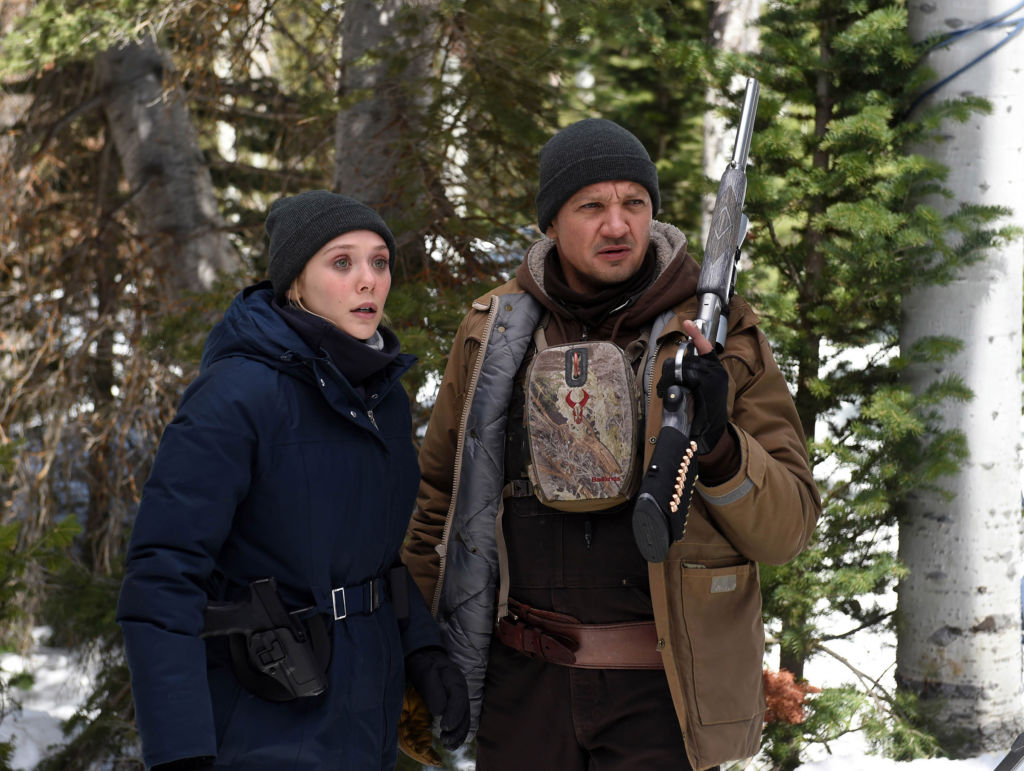 It is possible that I wrote my last review in San Diego LGBT Weekly. Stampp Corbin, who founded the paper in 2010 and who hired me as its film critic in January, 2011, has moved onto other things and as of this writing is looking to sell the paper. But it may not sell, and even if it does, I don’t know if I’ll still be the film critic.
It is possible that I wrote my last review in San Diego LGBT Weekly. Stampp Corbin, who founded the paper in 2010 and who hired me as its film critic in January, 2011, has moved onto other things and as of this writing is looking to sell the paper. But it may not sell, and even if it does, I don’t know if I’ll still be the film critic.
But if it had to end, I’m glad it was Coco. You’d have to stretch to find true queer content (the gay couples folks have noticed are, I’m pretty sure, brothers and a father and son) but Coco is among my favorite animated films ever. Here was my review:
I’ve written before that I cry easily at the movies, and I’ve cried at some terrible ones. I’m still embarrassed that I cried at a screening of the wretched and sappy Jack Frost in 1998. But I’ve never been ashamed that animated Pixar movies have moved me to tears, partly because I’m joined by millions of other weepers, but mostly because the films tend to be so well written that the audience’s emotional responses feel earned rather than manipulated.
While the characters are always archetypes, they are still layered and complex; the plots tend to focus on conflicts most of us experience as young people, but the writers use innovative, often fantastical ways to tell and resolve the stories. The studio’s latest and one of the best is Coco, a film about music, love and death that uses Día de los Muertos to examine the power of memory to define family and identity. It’s stunningly beautiful, very moving and very funny.
Miguel (voiced by Anthony Gonzalez) is a Mexican boy who only wants to become a musician. Unfortunately, after his musician great-great-grandfather abandoned his great-great- grandmother Imelda and their daughter Coco, music was not allowed anywhere in the family’s shoe-making business, their sprawling home, or, it seems, even their thoughts. When they discover Miguel playing a guitar in the town plaza, his family, especially his Abuelita (Renée Victor), react as if he’d joined a violent gang – the horror! While initially he is willing to abide by the rules, on the day of Día de los Muertos he determines that his missing great-great-grandfather was none other than his hero Ernesto de la Cruz, barrel-chested 1940s matinee idol and “the greatest musician in the world.”
As people decorate gravestones with marigolds and tasty treats for the only night long-departed spirits are allowed to visit, Miguel breaks into Ernesto’s mausoleum to retrieve the musician’s famous white guitar. And suddenly Miguel and his dog Dante are transported to the exquisitely garish land of the dead, where everyone is a skeleton and they are all flabbergasted that he’s there, alive, and fleshy. He needs the blessing of a family member to get home, but his bony relatives, led by Imelda (Alanna Ubach), won’t send him back unless he promises never to play music again. So, he runs off to find Ernesto with the sad sack Hector (Gael García Bernal), who is fading away as he is being forgotten back in the living world.
Adrian Molina and Matthew Aldrich’s flawless script is both a hero’s journey through the underworld and also a domestic dramedy about the ways tight-knit, multi-generational families try to resolve their oldest, most painful conflicts. And it also a mystery: Why is the film called Coco? They manage to explain the beauty and particulars of Día de los Muertos without being pedantic, and they thread in knowing jokes about Mexican families and culture without being obscure or offensive. Grandmothers wield their shoes like revolvers, the skeleton of Frida Kahlo makes several absurdist cameos, and Ernesto’s films are perfectly silly parodies of Mexican cinema of the 1930s.
The songs, written by Frozen Oscar winners Kristen Anderson-Lopez and Robert Lopez, are beautiful hybrids of American pop and traditional Mariachi. I predict “Remember Me” will be omnipresent before winning the Oscar for Best Original Song. It, too, does double duty. First it is a bombastic hit for Ernesto in the 1940s, and then it is sung as a heart-breaking duet. It was during the latter when I cried bittersweet tears.
Coco
Directed by Lee Unkrich and Adrian Molina
Written by Adrian Molina and Matthew Aldrich
Starring Anthony Gonzalez, Gael García Bernal and Benjamin Bratt
Rated PG
Review originally published in San Diego LGBT Weekly.
 It is possible that I wrote my last review in San Diego LGBT Weekly. Stampp Corbin, who founded the paper in 2010 and who hired me as its film critic in January, 2011, has moved onto other things and as of this writing is looking to sell the paper. But it may not sell, and even if it does, I don’t know if I’ll still be the film critic.
It is possible that I wrote my last review in San Diego LGBT Weekly. Stampp Corbin, who founded the paper in 2010 and who hired me as its film critic in January, 2011, has moved onto other things and as of this writing is looking to sell the paper. But it may not sell, and even if it does, I don’t know if I’ll still be the film critic. Marsha P. Johnson was at the Stonewall Inn when the police raided the bar June 28, 1969, and she helped start the riots that mark the beginning of the modern gay rights movement. She was a beloved fixture in Greenwich Village for 30 years; she co-founded Street Transvestite Action Revolutionaries, modeled for Warhol, protested with ACT-UP and performed cabaret in a troupe of drag queens. Born Malcolm Michaels, she arrived in the Village in 1963, started going to drag balls, and took on the name Marsha; she said the Johnson was taken from Howard Johnson’s and the P was for “Pay it no mind!” Hilarious, generous, rebellious and erratic, Marsha’s body was found floating in the Hudson River in 1992. The circumstances of her death were extremely suspicious, but the New York police did little to investigate, even after her friends led a march to protest their inaction.
Marsha P. Johnson was at the Stonewall Inn when the police raided the bar June 28, 1969, and she helped start the riots that mark the beginning of the modern gay rights movement. She was a beloved fixture in Greenwich Village for 30 years; she co-founded Street Transvestite Action Revolutionaries, modeled for Warhol, protested with ACT-UP and performed cabaret in a troupe of drag queens. Born Malcolm Michaels, she arrived in the Village in 1963, started going to drag balls, and took on the name Marsha; she said the Johnson was taken from Howard Johnson’s and the P was for “Pay it no mind!” Hilarious, generous, rebellious and erratic, Marsha’s body was found floating in the Hudson River in 1992. The circumstances of her death were extremely suspicious, but the New York police did little to investigate, even after her friends led a march to protest their inaction. When I was coming out and learning about the various LGBT people who came before me, one of the images I saw repeated the most was the last shot of the absurdist tennis match called the Battle of the Sexes, when then-closeted Billie Jean King backhanded the ball past chauvinist huckster Bobby Riggs’s right and then he jumped over the net to shake her hand. Even though the whole event was clearly a money-making publicity stunt for Riggs, the result was an iconic moment for the women’s liberation movement in general and for women’s tennis in specific, and after King became the most famous lesbian in the world, for the gay and lesbian movement, too. Jonathan Dayton and Valerie Faris’ excellent, crowd-pleasing Battle of the Sexes explores the story’s historical importance, the players’ fraught emotional lives, and, yes, the ridiculousness of the whole thing.
When I was coming out and learning about the various LGBT people who came before me, one of the images I saw repeated the most was the last shot of the absurdist tennis match called the Battle of the Sexes, when then-closeted Billie Jean King backhanded the ball past chauvinist huckster Bobby Riggs’s right and then he jumped over the net to shake her hand. Even though the whole event was clearly a money-making publicity stunt for Riggs, the result was an iconic moment for the women’s liberation movement in general and for women’s tennis in specific, and after King became the most famous lesbian in the world, for the gay and lesbian movement, too. Jonathan Dayton and Valerie Faris’ excellent, crowd-pleasing Battle of the Sexes explores the story’s historical importance, the players’ fraught emotional lives, and, yes, the ridiculousness of the whole thing. Taylor Sheridan writes modern western thrillers with something like consciences. In Sicario, drug war on the U..S Mexico border corrupted the best of intentions. One of last year’s Best Picture nominees Hell and High Water was about two brothers who robbed a scurrilous bank that had cheated their mother out of her land. Wind River, Sheridan’s directorial debut, is a murder mystery set in a Wyoming Native American reservation both neglected and exploited. As in Sheridan’s other movies, the morality of Wind River’s central protagonist is as gray as the winter sky before a storm. And as in Sicario, the racial politics in Wind River are complicated and occasionally problematic. Sheridan’s writing is as taut and smart as ever, and his direction, from an epic use of landscapes to intense and intimate interaction between his actors, is as impressive, using his great actors, Ben Richardson’s cinematographing and Nick Cave’s music to create gorgeously sad scenes of crime and punishment.
Taylor Sheridan writes modern western thrillers with something like consciences. In Sicario, drug war on the U..S Mexico border corrupted the best of intentions. One of last year’s Best Picture nominees Hell and High Water was about two brothers who robbed a scurrilous bank that had cheated their mother out of her land. Wind River, Sheridan’s directorial debut, is a murder mystery set in a Wyoming Native American reservation both neglected and exploited. As in Sheridan’s other movies, the morality of Wind River’s central protagonist is as gray as the winter sky before a storm. And as in Sicario, the racial politics in Wind River are complicated and occasionally problematic. Sheridan’s writing is as taut and smart as ever, and his direction, from an epic use of landscapes to intense and intimate interaction between his actors, is as impressive, using his great actors, Ben Richardson’s cinematographing and Nick Cave’s music to create gorgeously sad scenes of crime and punishment.